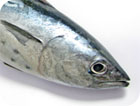Clean Seas - A Sustainable Future for the Bluefin Tuna
Jan 13, 2010

From an annual catch reaching 80,000 tonnes in the 1960’s, natural resources of Southern Bluefin Tuna have been severely depleted, to such a point that total allowable catchment quotas have been reduced to 9449 tonnes for the 2011 fishing season. ‘The end game is now in play’, confirms Mr. Hagen Stehr AO, founder and Chairman of Clean Seas, ‘the tuna of the future will not come from the wild, but will come from propagation’.
Clean Seas Tuna Ltd. is an industry leader in the propagation and aquaculture of Southern Bluefin Tuna (SBT). In March 2009, Clean Seas accomplished a world first by artificially breeding SBT in landlocked tanks at their Tuna Breeding Facility in Arno Bay, South Australia. By completing the lifecycle of SBT at their Tuna Breeding Facility, Clean Seas is at the point of realizing the commercialization of SBT through sustainable aquaculture.
Tuna Fisheries under Siege
‘The Tuna Fishing Industry is currently under siege around the world, but this is not necessarily a bad thing, there are good and bad points’. Mr. Stehr is referring to current quota restrictions of wild Tuna fishing that have been brought into place not only in Australia, but around the world. In September 2009, the Commission for the Conservation of Southern Bluefin Tuna (CCSBT) reduced the Total Allowable Catch (TAC) of Southern Bluefin by 20% over 2 years. This is what will bring the total allowable catch of SBT to less than 10,000 tonnes by the 2011.
As for Northern Bluefin Tuna (NBT), there is support from the European Commission to list NBT as an endangered species at the next Convention for International Trade in Endangered Species (CITES) meeting in March 2010. If NBT becomes listed as an endangered species, then international trade of NBT will be banned for 2 years, and a moratorium on catching wild NBT in the Mediterranean will be enforced. However, this will in turn provide a stronger demand for sustainable aquaculture, and the current business activities of Clean Seas.
International Recognition Opening up New Export Markets
With more than 95% of Australian SBT exports traditionally going to Japan, the sashimi and sushi market has historically been the primary driver for high quality Tuna. Demand is diversifying, however and has spilled out across Japanese borders, with increasing growth opportunities for Australian seafood in the domestic market, the U.S., Europe, and other parts of Asia. Accordingly, Clean Seas is changing with the times, and gradually increasing the tonnage of their exports to respective countries around the world, not only for Tuna, but also for their prized Hiramasa Kingfish. This has given Clean Seas international recognition from European Michelin starred Chefs, where Clean Seas are using the strength of their increasing Kingfish exports to support funding for their Tuna Research Facility.
While industry has recognized the achievements of Clean Seas, the international media has also been quick to follow suit. Most notably, Time Magazine have recently caught onto this trend by declaring the propagation of aquaculture bred Southern Bluefin Tuna second place in their ‘50 best inventions of 2009’. The number one position was taken by the invention of the NASA Ares 1 rocket, and was followed by the AIDS vaccine that came in third. Mr. Stehr is quite philosophical about the matter and reflected, ‘well, if you’re going to be beaten by anybody, it might as well be NASA’.
A Unique Relationship with Japan
The Clean Seas relationship with Japan does not stop as an export destination for their produce, but is deeply involved in their research activities and the propagation of SBT. In July 2009, Clean Seas and Kinki University of Japan have signed A Memorandum of Understanding, contributing towards the success of SBT propagation. Through the Understanding, numerous scientists and technicians from Kinki University have come to Clean Seas in Arno Bay to assist with the SBT breeding program. Kinki University has been researching the cultivation of Pacific Bluefin Tuna (PBT) since the 1970’s, successfully completing the full-cycle culture of PBT, and trade marking their produce as ‘Kindai’ Tuna. Kinki University are thus commercially successful, producing Pacific Bluefin by sustainable means. The main difference, however, is that Clean Seas have successfully bred Tuna in landlocked tanks, while Kinki University are still cultivating Pacific Bluefin Tuna in sea cages.
Besides his affiliation with Kinki University, Hagen himself has a self-professed admiration for the Japanese education system. Mr. Stehr is also the Chairman of the Australian Fisheries Academy in Port Lincoln, and is a keen supporter of growing not only fish, but also the next generation of professionals for the Australian fishing industry. The Academy, founded in 1997, he explains, was modeled after a trip to Japan and a fisheries academy he visited while in Tokyo.
The Future for Tuna
While touring the Clean Seas facilities at Arno Bay, a new Tuna hatchery was being constructed in preparation for the next batch of Tuna fingerlings. Hagen himself was surprised at the size of the complex and the number of tanks that were being built. With international pressure for the reduction of wild caught Tuna, more and more companies and countries will follow the lead of Kinki University and Clean Seas. During our visit to Clean Seas, on more than one occasion Mr. Stehr quoted economist and Nobel Laureate Peter Drucker who stated that ‘Aquaculture, not the Internet, represents the most promising investment opportunity of the 21st Century’. As for the propagation of Southern Bluefin Tuna, return on investment is promising. By December 2010, Clean Seas plans to transfer the first batch of SBT from the land based hatchery to open sea pens for growing, with the first commercial harvest of SBT expected by 2013.
Raymond Roche is a Market Development Officer at the Japan External Trade Organization’s Sydney Office.
The views represented within this article are those of the writer and not necessarily the views of JETRO or the Japanese Government.





